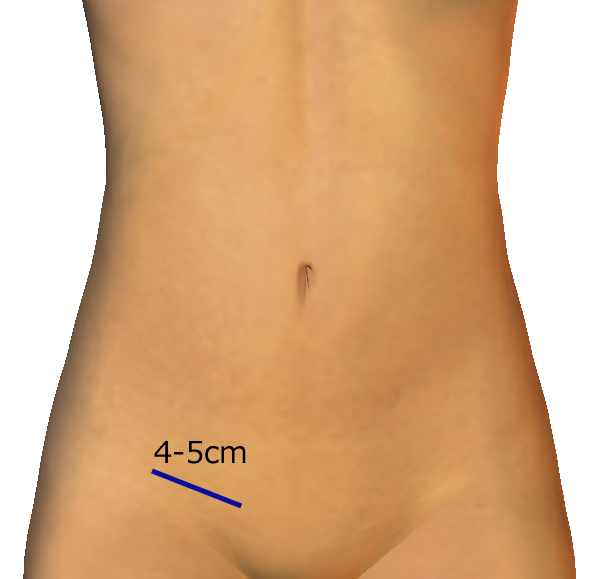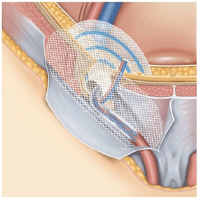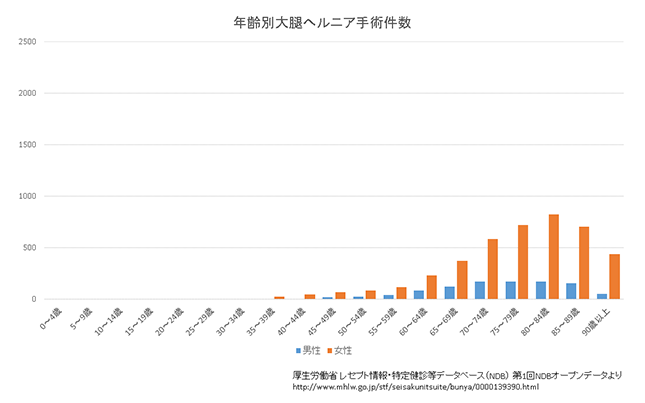
Femoral hernias
Consultations
What are the characteristics of femoral hernias in adults?
大腿A femoral hernia is a bulge of intestines that protrudes under the skin just below the inguinal (groin) area where the leg joins the trunk of the body.
Femoral hernias are less prevalent than inguinal hernias, but are more common in women, and often lead to emergency surgery.
Can a femoral hernia heal spontaneously?
No, a femoral hernia in an adult cannot heal by itself.
The only treatment available is surgical repair.
What happens if a femoral hernia is not treated (surgically) ?
The bulge of the hernia can often be spontaneously reduced (the content returns to the inside of the abdominal cavity) by reducing pressure on the abdomen (for example, by lying down). When the patient stands up again or pressure on the abdomen increases for other reasons, the bulge will reappear.
It may become impossible for the bulge to return into the abdomen, a condition that is called incarceration. Incarceration is a very dangerous condition, and emergency surgery is usually required. If the incarcerated intestines would burst it may be fatal.
Femoral hernias are less prevalent than inguinal hernias, but femoral hernias are more prone to undergo incarceration, and emergency surgery is required in 35% of cases, which is a relatively high rate. Surgery is therefore recommended for all cases of diagnosed femoral hernia.
Which treatment methods are available?
In case t is caused by a metabolic defect, that metabolic defect continues to be present after surgical repair of the hernia. If simple repair by stitching is performed, as used to be the standard procedure in olden times, the wound area will weaken over time, and the hernia may recur. It is therefore necessary to use synthetic mesh to repair the hernia.
【1. Using the patient’s own tissue to repair the hernia】
With this treatment method, a patient’s own tissue is used to repair the weakened area by stitching it.
One advantage of this method is that infection is less likely to develop than with a synthetic membrane (mesh) patch since the patient’s own tissue is used.
A disadvantage of the method, however, is that already weakened tissue in the area is used for the surgery, increasing the possibility of recurrence, and patients also may have stronger post-operative pain that lasts longer.
This classical method is presently only used under very special circumstances.
【2. Using synthetic mesh to repair the hernia】
With this treatment method, the weakened part of the abdominal wall is reinforced using a synthetic membrane (mesh) patch made of material that does not cause any problems when implanted in the human body.
Advantages of this method include a low incidence of recurrence of hernia and relatively mild post-operative pain.
Disadvantages include higher susceptibility to infection than when the patient’s own tissue is used, and post-operative pain that may rarely continue for a long time.
Surgical repair using synthetic mesh has become the current mainstream method of treating inguinal hernias in adults, and almost all cases are treated this way.
Surgical procedures using synthetic mesh are largely divided into two types: open repair and laparoscopic repair.
Open inguinal method of making an incision through the skin covering the bulge of the hernia to repair it


A synthetic mesh patch is used to repair the defect from the area where the incision was made.
The hernia is repaired from outside of the body.
Laparoscopic repair by making small incisions at some distance from the hernia

Three small incisions are made in the abdominal a synthetic mesh patch is used to repair the defect. wall, and special surgical instruments are inserted through these openings to do the repair.

Special surgical instruments are inserted through the openings and a synthetic mesh patch is used to repair the defect.

The hernia is repaired from inside the body.
Which method of repair is better?
The best procedure for every patient depends on the patient’s general physical condition and the past medical history, and differs for every case.
Hernia specialists will determine the best treatment based on every patient’s individual situation.
Please see the 2015 Inguinal Hernia Treatment Guideline of the Japan Hernia Society, for the general treatment methods available.
Surgery-related statistics
Both open inguinal surgery and laparoscopic procedures are performed.
Since 2004 we have performed surgical repair of femoral hernias in approximately 70 cases, and there have been no cases of recurrence.
In Japan there is not an official certification system for inguinal hernia repair techniques, but certification is available for laparoscopic hernia repair, and of the only 66 surgeons who have received certification as of July 2017, two are performing laparoscopic hernia repair procedures at this center on a full-time basis.

